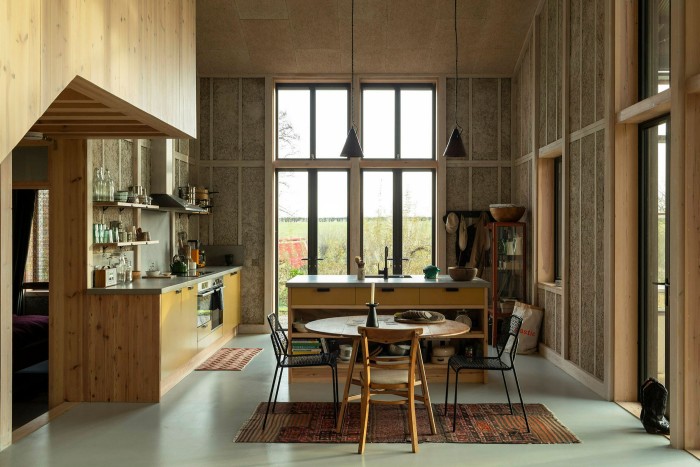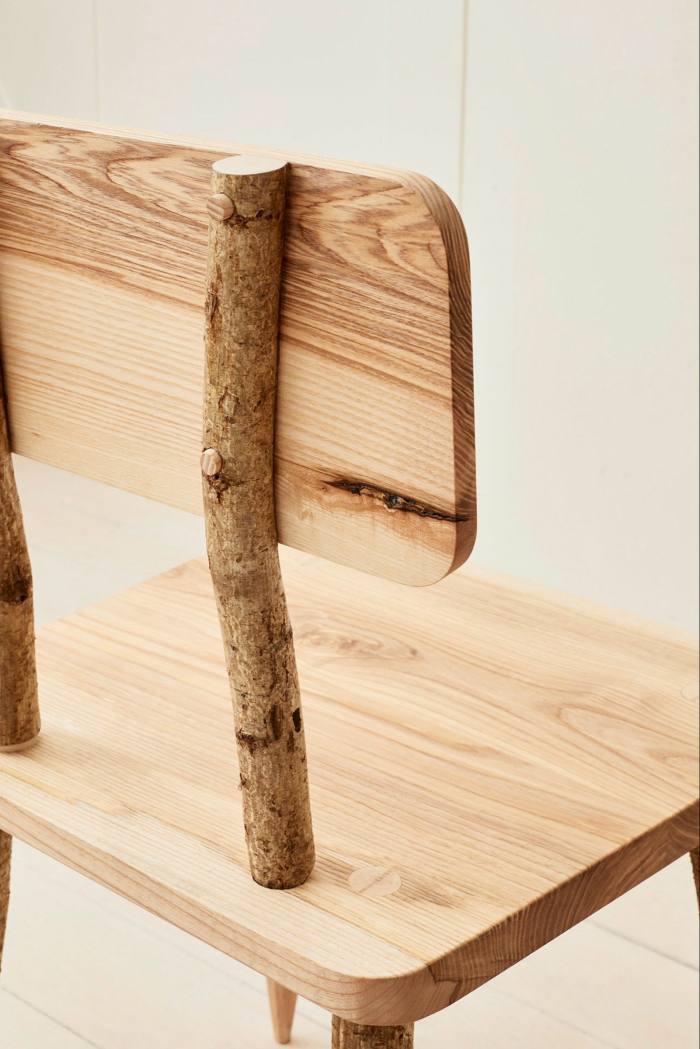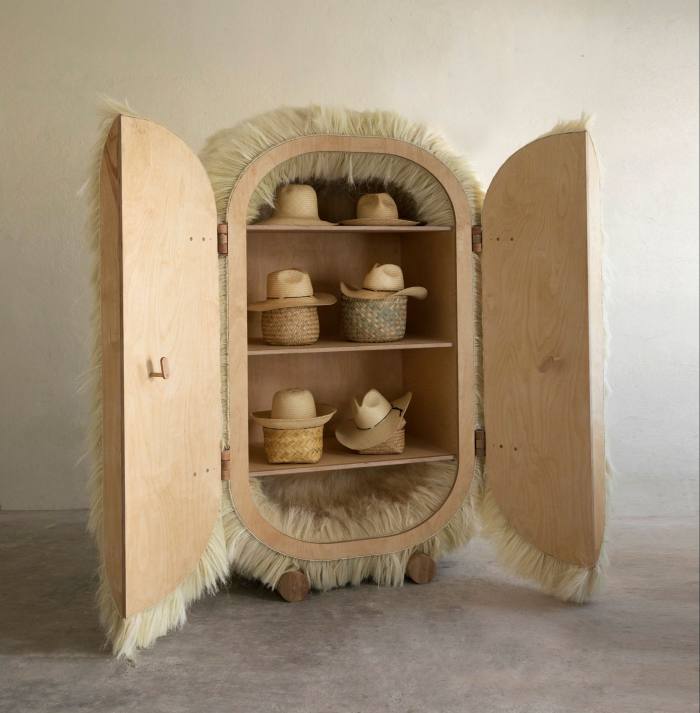Can indigenous knowledge help us design a more sustainable future?
At the confluence of the Tigris and Euphrates rivers in southern Iraq, a community called the Ma’dan, or Marsh Arabs, live in floating thatched villages once so numerous they were dubbed the Mesopotamian Venice. Their homes — hand sculpted from qasab reeds — bear little resemblance to their Italian counterparts, but could they hold lessons for how we build more ecologically sound Venices in the future?
Many of the Ma’dan have been forced on to dry land in recent decades due to droughts and deliberate drainage of the wetlands for political ends. But while their way of life might be under threat, their ingenuity is finally being recognised: with the increased risk of flooding due to climate change, the need for man-made islands is becoming a looming prospect — and architects and designers are looking for solutions.
“The Ma’dan culture offers a living example of how future water-based civilisations can live sustainably and symbiotically,” says designer Julia Watson, who is collaborating with the community on an installation for the Barbican’s exhibition Our Time on Earth, opening in London in May. It’s one of a series of spring shows looking at how traditional ecological knowledge can nurture the health of the planet, including Gaining Ground at London’s Craft Council Gallery and the Bio27 design biennial in Ljubljana.
Watson points to how the Ma’dan build their islands atop fenced-off sections of living reeds, which filter pollutants from the water, protecting its rich ecosystem. “Biodiversity is a building block on which these cultures float,” is how she described it in her 2019 book LoTek: Design by Radical Indigenism. They make everything, from the islands themselves to houses and furniture, from one natural material, using techniques honed over 5,000 years.
While people in the west are unlikely to decamp to floating reed homes, the idea of working with nature, not against it, is gaining traction.

Our Time on Earth involves designers, scientists and artists and offers, the Barbican says, “visions and possibilities for the future of all species”. Watson is working with the Ma’dan community, the Khasis hill tribe of north-eastern India — famous for its living bridges made from aerial roots of rubber fig trees — and farmers in Bali known for their Subak water irrigation system that creates fertile rice terraces and bolsters the local ecosystem.
Multimedia installation “The Symbiocene”, made in collaboration with architect Smith Mordak of Buro Happold, will imagine how urban environments might look in 2040 if we incorporate indigenous technologies.
The Barbican’s show comes at a moment of reckoning for designers and architects. In recent years, the focus has been on using natural resources better and reducing emissions — urgent priorities when buildings and construction create nearly 40 per cent of global emissions, according to the World Green Building Council. But, with biodiversity declining faster than ever, the need for design to drive regeneration is critical. Since 1970, we have lost 68 per cent of mammal, bird, amphibian, reptile and fish populations, says the World Wildlife Fund’s Living Planet Report 2020.
Indigenous peoples currently care for about 80 per cent of global biodiversity, but are disproportionately affected by climate change and extractive agriculture practices, driven by the world’s hunger for materials. A new UN Environment Programme report predicts increases in wildfires, if greenhouse emissions continue at their current rate, in the forests of Indonesia and the Amazon, which suffered record deforestation for the month of January.
The homes of the Ma’dan themselves were largely destroyed by the drainage of the Mesopotamian marshlands that began in the 1950s for oil exploration and agriculture and continued in the 1990s when Saddam Hussein targeted the Ma’dan as political opponents. In the aftermath of a Shia uprising against his Ba’ath party, he turned the area — where many of the rebels had retreated — into a desert as a punishment.

Since 2003, it has been partially reflooded and restored and some of the Ma’dan have rebuilt their homes, though the construction of dams upriver and a series of droughts mean their future on the water is fragile, as is the biodiversity of the wetlands.
Nevertheless, a shift to more planet-positive practices is beginning in the design world. Last month the British Council announced the 2023 British Pavilion at the Venice Architecture Biennale will explore “non-extractive” design, looking at how diasporic craft cultures can be part of an architecture “built on principles of care and equity over extraction and exploitation”.
Meanwhile, 1,212 UK architecture firms have signed up to an initiative called Architects Declare, pledging to design buildings with a positive environmental impact. “We need to overcome the separation between man and nature that encourages extraction,” says co-founder Michael Pawlyn, founder of Exploration Architecture and an expert in biomimetic design, which imitates natural systems. His new book Flourish, co-written by Sarah Ichioka, is a call to arms for designers to find new forms of creative coexistence, “much as many Indigenous cultures have done for millennia”.
While it would be wrong to say no indigenous community has ever overstepped nature’s boundaries, interdependence is embedded in some communities’ spiritual beliefs. “We are a part of the land and nature, and our creation stories focus on this,” says environmental scientist Jessica Hernandez of her Maya Ch’orti’ and Zapotec kin. “As a result, we don’t ‘own’ the land, but rather coexist with it as relatives.”
In her new book Fresh Banana Leaves, she argues that western notions of conservation and creating national parks have strengthened the separation between humans and nature, while displacing indigenous peoples.
Meanwhile, botanist Robin Wall Kimmerer, an enrolled member of the Citizen Potawatomi Nation, calls for a mutual flourishing between both in her best-selling book Braiding Sweetgrass, describing plants as gifts. “Becoming indigenous to a place means living as if your children’s future mattered, to take care of the land as if our lives, both material and spiritual, depended on it,” she writes.
In her stories of indigenous wisdom, she recounts how black ash trees, a declining species in Oklahoma, thrive where Potawatomi basket makers harvest their materials, creating spaces in the forest canopy for new growth.
To stimulate such reciprocity at home, the first question a designer should ask is “what materials and solutions already exist in a place?” says Pawlyn. “What’s special about the Ma’dan is how they’ve created an entire architectural language out of an abundant local material.”
He finds comparative promise in a new piece of British design ingenuity, Flat House, a zero-carbon home in Cambridgeshire created for film director Steve Barron by Practice Architecture. It is made from prefabricated panels of hemp — a fast-growing, insulating fibre that sequesters more carbon than conventional forestry, say the architects — cultivated on the surrounding farm. “Flat House has a net positive effect, rather than just mitigating the negative impact of construction.”

This intertwining of farming and making is seen in many rural communities worldwide, ensuring more balanced consumption. In the Selaawi village, located in Indonesia’s West Java Province, for example, the same people who harvest bamboo also weave it into baskets. They select only mature shoots because they believe cutting the younger ones would affect the whole family.
But as demand for this renewable material prompts industrial farming, such ecological wisdom is being ignored. “It has affected the bamboo forests, and the varieties are decreasing,” says a local artisan, Utang Mamad.
This knowledge is heeded by Bali-based architecture practice Ibuku, which builds bamboo homes that blend with their environments. Ibuku’s craftspeople only use mature bamboo poles from Bali and Java “to create an incentive for the bamboo farmers to allow the younger shoots to grow to maturity”. Here, the intertwining of design and traditional ecological knowledge (TEK) helps shift behaviour.
The Selaawi artisans are part of “Making Nature”, a British Council-funded digital map of craft practices in Indonesia and the UK that benefit local ecologies. It will be shown in the Crafts Council Gallery’s April exhibition Gaining Ground, exploring global craft practices in sync with nature.
The map reveals how British designers are re-engaging with vernacular practices to regenerate the land. In Cumbria, swill basket-maker Lorna Singleton coppices her oak from surrounding woodlands — a centuries-old practice that encourages growth and allows light into the forest floor, boosting biodiversity. “It mimics the trampling effect that mammoths once created,” she says.


In Kent, furniture maker Sebastian Cox coppices four acres of ancient woodland, seeing the timber as a byproduct of conservation. “Our furniture tells the story of what responsible forestry could look like,” he says.
Such ideas recall the land stewardry practices often used by indigenous communities to stimulate growth. But as the creative world wakes up to the importance of inherited ecological wisdom and design technologies, how do we ensure those most at risk from climate change aren’t now exploited for their knowledge?
“We need to avoid a situation where we’re simply extracting their technologies from them,” says Julia Watson. To safeguard the intellectual property of the communities, the Barbican collaborators will take an oral “Oath of Understanding”, to be entered into through unalterable “smart contracts” encoded on public blockchains.
It’s a complex issue, says Jay Mistry, a ceramic artist and professor of environmental geography at Royal Holloway, University of London. “A key challenge is representation.” She is working on a Darwin Initiative-backed project to integrate traditional knowledge into national policy in Guyana. “I’m looking at how the ways indigenous peoples manage the environment can be brought into the mainstream but, importantly, we’re trying to ensure they are part of decision-making so that they benefit from it.”

Mistry is rejuvenating some of the cultural and ecological knowledge that disappeared during colonial times, namely the pottery practices of Macushi and Wapishana. The results — made using wild clays fired at low temperatures so that they will biodegrade — have inspired Mistry’s own ceramics, which will be shown in Gaining Ground.
Globalisation has had similar effects in Mexico. Here designer Fernando Laposse is trying to reinstate local agricultural practices and boost livelihoods. He creates sisal furniture — hairy, characterful pieces that bring to mind Cousin Itt — sold internationally, such as at London’s Sarah Myerscough Gallery. But these works are just an offshoot of his conservation efforts in the region surrounding the village of Tonahuixtla.
“My design pieces are the last step in a series of actions to stop land erosion,” he says. With local farmers, he is reversing the damage caused by chemical-heavy industrial farming — introduced after the North American Free Trade Agreement in 1994 — that turned fertile lands into deserts. They have planted agaves over 120 hectares using a historic terracing system to create water and soil retention. Now life is returning and local people are employed to turn the sisal fibres from the agaves into furniture. “We’ve created a new craft that finances environmental repair.”

It’s an idea that curator Jane Withers calls “super vernaculars” in her theme for Ljubljana’s Bio27 design biennial from May, showing Laposse’s venture, among others. “Far from being nostalgic, it’s about recognising the value of TEK as a catalyst for inspiring contemporary design culture in tune with nature so that we can dismantle the toxic values caused by global expansion and the pursuit of profit first,” she says.
Withers is assembling groups of designers, ecologists and material scientists to come up with solutions for local Slovenian needs that draw on local and international knowledge. “Design has been in a silo for too long,” she says.
Such thinking may permeate the realm of luxury goods too, with the LVMH group teaming up with London’s Central Saint Martins art college to launch a Regenerative Design MA in September. “It will be taught online so that people can identify problems in their local ecosystems and communities, then respond,” says Professor Carole Collet — ideas, one hopes, that will feed into LVMH brands, which include Louis Vuitton and Dior.
But design education, idea sharing and collective action are just part of the systemic change needed to quell our extractive behaviour en masse. “If our economic models continue to reward endless growth, every species will be in trouble,” says Pawlyn. Boosting biodiversity is something in which we should all be invested.
“Our Time on Earth” is at the Barbican, London, May 5- August 29; barbican.org.uk
Follow @FTProperty on Twitter or @ft_houseandhome on Instagram to find out about our latest stories first